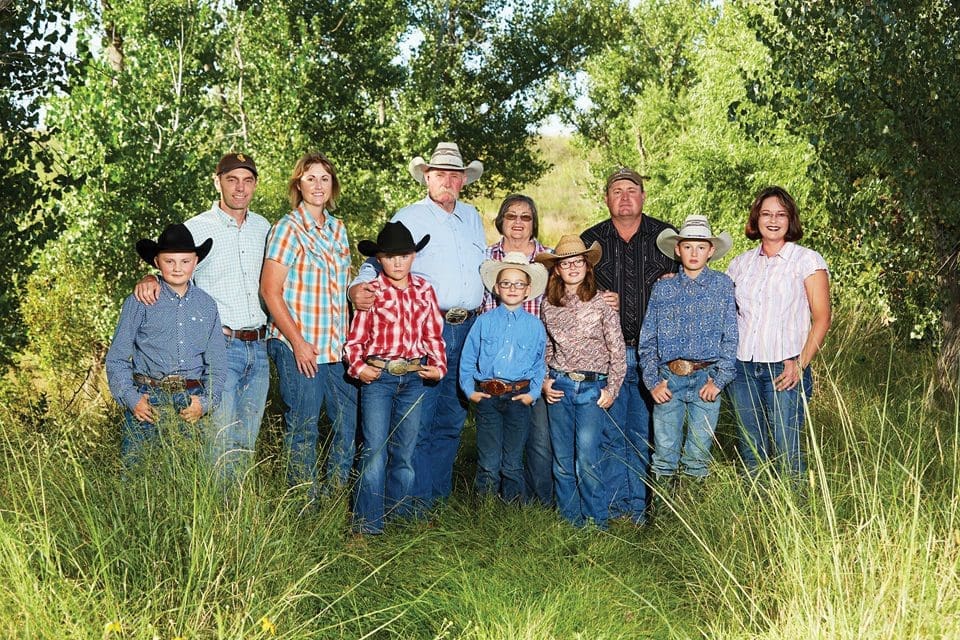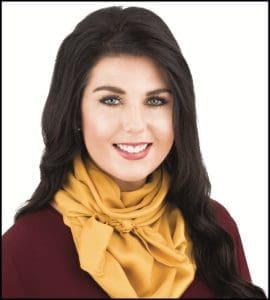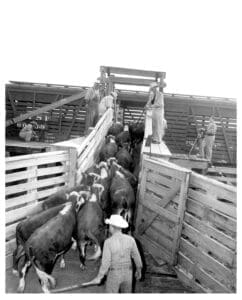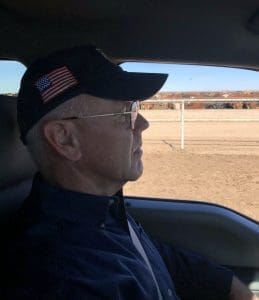Priorities Enable Success
By Patti Wilson, Contributing Editor
Flexibility. That word embodies the forward-thinking mindset of the Switzer clan of Burwell, Neb. Not an easy path to follow, this family has branched out into entities not imagined by most entrepreneurs. A visit with Sarah Switzer Sortum gave a clear view of how this open-minded outfit adjusts to the ever-changing challenges of ranch life.
Kinkaiders
The Switzer Ranch was settled by Sue Ann Switzer’s great-grandfather, Alfred Scherzberg, in 1904. He and a brother utilized the Kinkaid Act to acquire Loup County, Neb., property. Marrying a local girl, Scherzberg began to build a suitable farmstead.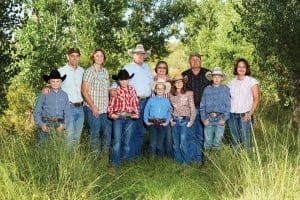
After a wooden barn was completed, their soddy was vacated for a house made of lumber. The barn is still in use today. Thus, an ambitious couple started the original Hereford cow-calf operation that remained a mainstay until changes arose in the late 1970s.
Adjustments on the Horizon
By 1978, the great surge in popularity of Angus cattle had trickled into the Nebraska Sandhills. Fueled in part by the huge numbers of feeder cattle that flow through the Burwell Livestock Market each year, production of black-baldy calves became a success for area ranchers with a solid base of Hereford cows. At this time, Sortum’s parents, Bruce and Sue Ann Switzer, were heavily involved in the family business. A switch to Angus bulls benefitted the operation as they specialized in baldy feeder steers; their heifer calves were especially sought after.
Disaster Strikes
In 2001, a tornado came through the ranch, killing more than 50 of the Switzers’ best black baldy heifers. The catastrophe coincided with difficult financial circumstances and pushed the family into dispersing their herd. Sortum says “this was a very wise and brave decision” on the part of her parents. She explains their difficulty in taking that step after working and building a herd for so long, but they did “what was best” for the long-term viability of the ranch. The adjustment they made started a sizeable diversification in their business, “spreading out the risk and offering more consistent revenue streams.”
Priorities
Sortum describes the driver behind their decision to diversify. “Pure need and a very strong desire for my family to live and work here,” She says. “Our family goal has always been to stay on the land, together. We’ll do what we need to do for that to happen as long as it lines up with our personal beliefs.
“When making decisions about the operation as a family, we look at the intersection of production, economic viability, conservation and quality of life. The decision needs to positively align with each of these things to move forward into practice.”
Each to Their Own Abilities
Although the big decisions are made as a family, the main roles are broken down as talent and ability dictate. Sortum’s father, Bruce Switzer, heads a custom-grazing operation, including client relationship and labor. Her brother, Adam, provides a wellspring of additional support that is always needed on a ranch. Fencing, moving cattle and well maintenance are good examples.
Sortum creates the deferred rotational grazing plan. She says their grazing system utilizes prescribed fire into the rotation to control infestation of eastern red cedar trees and increase plant diversity. These burns require extensive planning and coordination; Sortum’s brother Adam Switzer is the designated “fire boss,” shouldering much of the responsibility on those critical days.
Additionally, custom grazing and backgrounding provides revenue that has flexibility while utilizing available resources.
Adam Switzer heads up a custom backgrounding entity, taking full accountability for each detail, including developing feed rations and riding pens. Sortum and dad Bruce provide backup. Billing and bookwork are provided by Sortum and Sue Ann Switzer, her mom.
Bruce Switzer’s “baby” is the short-term cow project. Older cows are purchased each fall and calved out with the entire family helping. These are sold at grass time in the spring. The brief term of this project provides more liquidity and cash flow compared to a permanent cow base.
Sarah Sortum’s husband, Mark, is a self-proclaimed Sandhills “transplant.” He has converted nicely, though, according to his wife. Mark is a grade 7 through 12 science teacher in the Sargent school system, and capably provides additional labor on the ranch, in any capacity.
Unanimously, the family says the best part of each program is the kids, who are now old enough to help out, a lot.
Learning Curves
If one is to learn, it is imperative to leave your front yard. The Switzer family members are proud of a great network of progressive-minded industry members and organizations who do a great job of sharing information. Sortum herself attends conferences and field days whenever possible. Her greatest education has been obtained from traveling to South Africa and Namibia.
“Livestock and wildlife are cornerstones of the economy,” she says. Additionally, conservation is a valuable tool in rural economic development.
She says that ranchers are independent by nature and unafraid to try new things if they feel it may benefit their operations. Creativity, ingenuity and assertiveness naturally follow.
The open-minded and progressive nature of the Switzer crew led them to form a private land conservation group with their neighbor, the Morgan Ranch. Their efforts earned them the 2013 Region VII Environmental Stewardship Award presented by the National Cattlemen’s Beef Association (NCBA) National Cattlemen’s Foundation (NCF), Dow AgroSciences LLC and the Natural Resource Conservation Service (NRCS).
The Lodge Is Open
As Sortum and her brother got older , they married and had families. Returning to the Switzer Ranch meant that additional revenue was necessary for everyone to thrive; that was the impetus to build Calamus Outfitters. Sortum credits her brother’s gumption and entrepreneurship for the creation of this opportunity.
The campus encompasses two lodges that sleep 20 each, and four cabins that each sleep six. There is an event center that hosts a wide variety of gatherings in the area.
Activities include birdwatching in the spring (great prairie chicken and sharp-tailed grouse), open-air jeep tours, and tanking or tubing down the Calamus River. Clients have arrived from all over the world.
Sortum explained that many of their guests have never had the opportunity or desire to see a ranch; it’s the outside activities they offer that spark interest to vacation at the lodge. The entertainments become a vehicle for agricultural education and advocacy, and the family takes that responsibility very seriously. In their interaction with clients, she says it is evident that most people have a lack of accurate information (or inaccurate and negative information) and enjoy talking to someone who can explain the beef industry to them in practical and realistic terms. Their clients’ experiences result in people walking away with a more well-rounded view of the real challenges of the beef industry and an appreciation for the passion ranchers have for their land and livestock.
What’s in the Future?
Excited about the future of Switzer Ranch, Sortum wants each business entity to remain viable and healthy, with room for flexibility.
Natural resources offer the most opportunity and must remain a priority. She reminds us that there really are no “marginal” lands; each rangeland is valuable in its own way and must be given the thoughtful planning and management they deserve.
She reiterated that the most important element of the ranch is the children, who are learning to love the land and agriculture. The life skills and values gained there will serve them well, wherever they wind up.

